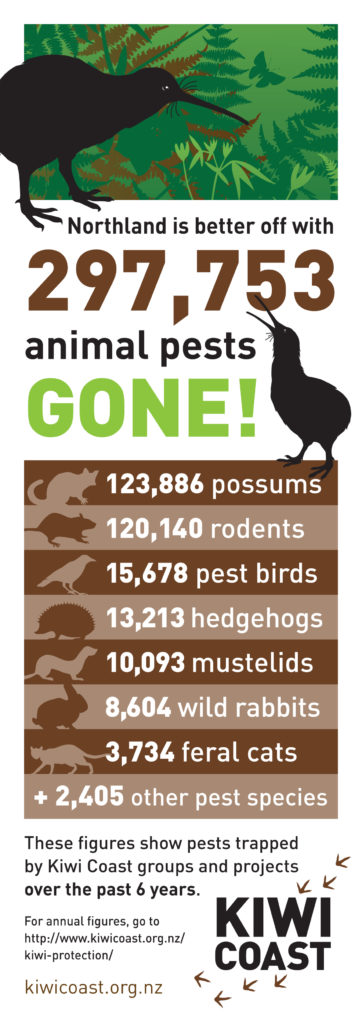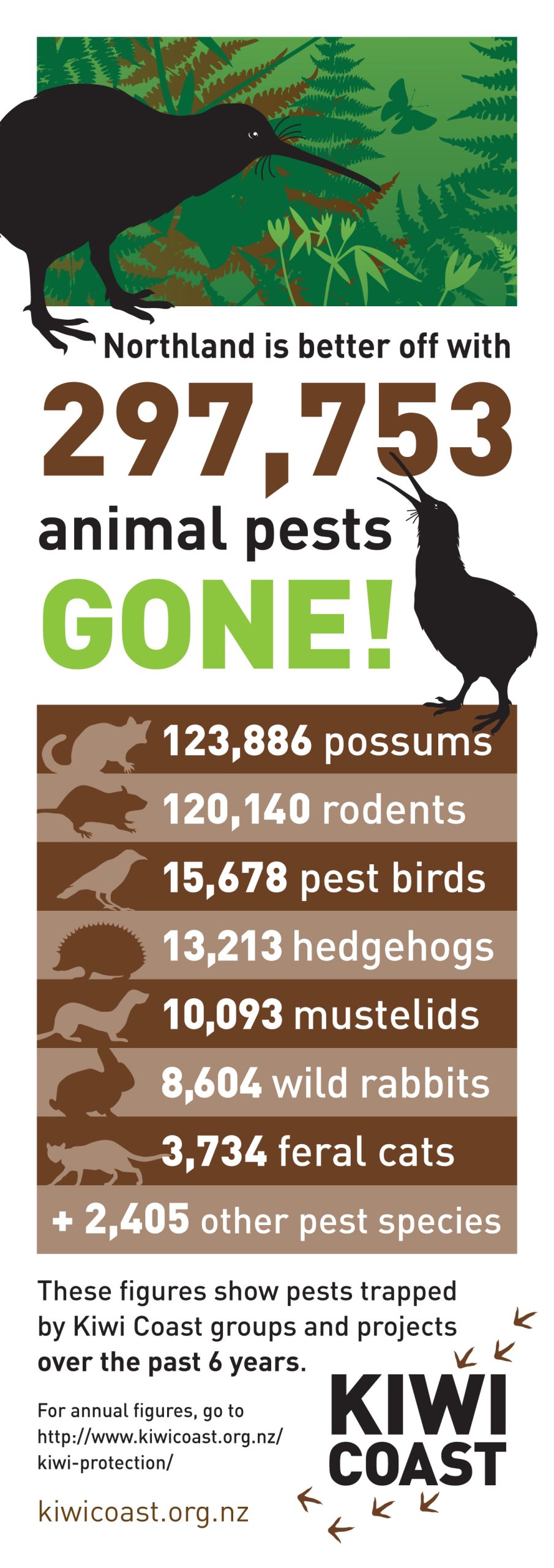 The results are in and pests are out!
The results are in and pests are out!
Groups and projects linked into Kiwi Coast have pooled their trap catch data for the sixth year in a row to show their collective results over the entire initiative which is working collaboratively to control pests and ensure that Northland’s native forests and wildlife – especially kiwi – can thrive.
The grand tally is 297,753 pest animals – with every single one trapped and recorded by trappers, landowners, farmers, school, projects and organisations working hard in their local areas to reduce the pests munching through forests and predating native insects, birds and berries.
Kiwi Coast collated the data for the sixth year in a row. This year 115 Northland projects, groups, and organisations sent in their data, setting a new record with 68,756 pests collectively trapped on the Kiwi Coast in 2018 alone.
The six year total for the pests now includes 123,886 possums, 120,140 rodents, 6,096 stoats and 3,734 feral cats.
Kiwi Coast Coordinator, Ngaire Sullivan said “Close to 300,000 pests trapped over six years has got to have made a tangible difference to Northland forests and native wildlife. The groups and projects linked into Kiwi Coast are now working together over approximately 155,000 hectares. It’s amazing what can be achieved when we all work together – but it all starts with just one person setting a possum trap in their back yard! Every pest trapped adds up in the long run and contributes to the overall regional result.”
Ngaire said that after six years of collating the data, a few interesting factors stood out.
“As more groups and projects get underway in mid, south and western Northland the number of ferrets reported increases. However, we still appear to have a markedly lower ferret population than other regions. This is great news for our kiwi as ferrets can predate adult kiwi and can quickly devastate a local population. ”
“Secondly, we need to be mindful that these results are actual trap catch data. Tens of thousands more pests are being controlled each year with toxin, and those numbers aren’t included here because they don’t get counted – so the true number of pests being controlled is far higher.”
“Thirdly, while we have no way at this stage of knowing if even these high numbers of trapped pests are making a dent in Northland’s overall pests populations, or if they are breeding and reinvading as fast as we trap them, some groups are starting to report less pests than in previous years – especially where projects have linked together to form continuous pest control operations over 10,000+ hectares. Kiwi Coast is keen to help create more of these linkages with willing projects, as this is the way forward to finding efficiencies and maximising results.”
A $500 trap prize (drawn randomly from a list of all the contributing groups and projects) was won by Mangatete Landcare, just south of Kaitaia.
Ngaire concluded by saying “A huge THANKS to every single person out there working hard in Northland week after week to control pests so our kiwi, forests can thrive again. These collective results show the power of working together and we truly are making a difference. While we can’t count the number of pests still out there, annual monitoring confirms that kiwi numbers are either stable or increasing in almost all areas linked into Kiwi Coast, while the overall nationwide trend in kiwi numbers is still declining. It’s working!”



